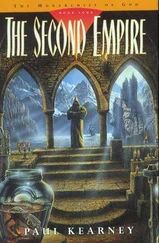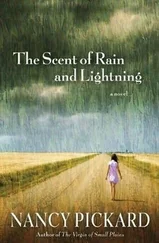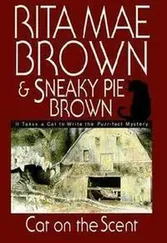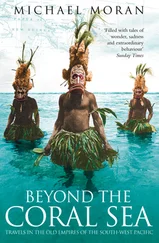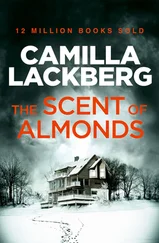There are a number of hypotheses surrounding the creation of Chanel No. 5. The theory that it was a mixing error on the part of an assistant is countered by the fact that the chord of rose and jasmine is perfectly balanced against the aldehyde complex, meaning it was the result of systematic studies. And the theory that it was inspired by the bracing arctic air is countered by the fact that Beaux had already used aldehydes in his Bouquet de Catherine in 1913, which was influenced by the popular Quelques Fleurs fragrance from the French perfumer Robert Bienaimé (1876–1960). The most likely scenario, therefore, is that Chanel No. 5 was a (modified) remake of Le Bouquet de Catherine from 1913, which Beaux had renamed and presented as Rallet No. 1 one year later. 8
Chanel No. 5 is said to be composed of thirty-one raw materials. In the elaborate language of perfume experts who want to speak in a manner befitting their subject, the list of aromas might be described (or camouflaged) as follows:
The top note is dominated by the vividly fresh, lightly metallic-waxy-smoky aldehyde complex C-10/C-11/C-12 (1:1:1.06 %), with its typical echoes of waxy rose petals and orange peel. The hesperidic-citric facets are picked up and emphasised by bergamot oil, linalool and petitgrain oil. The heart note is spanned by an aromatic core of jasmine, rose, lily-of-the-valley (hydroxycitronellal), iris butter and ylang-ylang oil. 9
Molecular analysis has ‘unequivocally’ proven the lineage of Chanel No. 5, but at the same time, the formula is said to have remained a secret to this day. 10
Much about the perfume is shrouded in uncertainty, including how Chanel No. 5 developed from this point onwards. This has to do with the nature of an industry that relies on secrecy, as demonstrated not least by Patrick Süskind’s novel Perfume . But its composition alone does not explain the stupendous success of Chanel No. 5. Many other things had to happen for this to be possible, as we will see. Chanel No. 5 is the product of what Karl Lagerfeld refers to as the ‘Russian connection’ in his homage to Coco Chanel, meaning it is more than just the sum of Chanel, Beaux and Grand Duke Dmitri Pavlovich. 11Ernest Beaux used his original Russian creation as a starting point, but he went on to develop a clearer, bolder fragrance.
It captured the scents of Moscow and Saint Petersburg and Dmitri’s gilded childhood. It was the exquisite freshness of the Arctic remembered during the last days of a fading empire. Above all, for Coco Chanel, here was an entire catalogue of the senses – the scents of crisp linen and warm skin, the odors of Aubazine and Royallieu, and all those memories of Boy and Émilienne. It was truly her signature perfume. Like her, it even had a past that was obscure and complicated. 12
The perfume ‘captured precisely the spirit of the Roaring Twenties’ and ultimately ‘shifted the paradigm’ of the world of fragrance. 13There is no better expression of this paradigm shift than the design of the Chanel No. 5 bottle. The message it sends is that the era of flowers and floridity, ornaments and embellishments, is over and a new age has begun. Jean-Louis Froment, who staged a major Chanel No. 5 exhibition at the Palais de Tokyo in Paris in 2012, says this perfume is the embodiment of the ‘quintessence of its time’. 14
A ‘paradigm shift’ of unequalled brutality had taken place in Russia in yet another ‘time of troubles’ – a decade of war, revolution and civil war. In the midst of this chaos, factories were shut down and expropriated, their staff expelled and murdered, and changes in ownership led to archives being destroyed or scattered across the globe. Plants closed when their workers left for the countryside to find food, the supply of raw materials was interrupted in the turmoil of the Civil War and blockade, and the authorities considered discontinuing the perfume industry as a luxury sector altogether. Foreign experts had disappeared (Germans were considered ‘enemy aliens’ and fled as soon as the war broke out in 1914), and work discipline had collapsed, as had production. Large cosmetic and perfume companies, such as Brocard & Co. in Moscow, lost personnel; Brocard had employed 1,000 people before the revolution but only had 200 afterwards. Master perfumers and technicians fled, and factory buildings were repurposed. The former Brocard building was temporarily used to print Gosznaki , or Soviet paper money, while the successor to Brocard had to move into a former wallpaper factory. An opulent publication commemorating Brocard’s fiftieth anniversary in 1914 shows that, at the time, the company had one of Moscow’s most advanced factories and one of the largest perfume plants in the world. 15It is no surprise that, in the general deprivation of the Civil War period – with paper in short supply and entire libraries winding up in the stoves known as burzhuiki – it was unthinkable that the impressive advertising posters that had made the company famous throughout the empire would continue to be used.
Private enterprises were nationalized and given new names. Brocard first became State Soap Factory No. 5 and was later renamed Novaya Zarya (New Dawn). Rallet & Co. became Soap Factory No. 4 and then Svoboda (Freedom) after 1924. The S. I. Chepelevetsky and Sons perfume factory was turned into the Profrabotnik (Trade Unionist) plant, while Köhler became Farmzavod (Pharmaceutical Plant) No. 12. 16If and when production resumed, it was to focus entirely on the toiletries urgently needed by the population. The perfume industry thus returned to its origins in soap-making – at least for a brief time. Priority was placed on the needs of Red Army soldiers who required basic toiletries to exchange for bread during their food procurement campaigns in the countryside. Soap and perfume became precious commodities in the barter economy, in which a single piece of soap could be equivalent to a life-saving loaf of bread. 17
According to Russian researchers, it was primarily the workers and employees themselves who were responsible for ensuring that factories threatened with closure were able to resume operations. A worker and member of the Bolshevik Party named Yevdokiya Ivanovna Uvarova was appointed director of Soap Factory No. 5 (formerly Brocard) and made a personal appeal to Lenin himself on behalf of her factory. 18As a result, some of the valuable essences used by Brocard and other companies could be recovered and used to restart operations on a much reduced scale.
The materials left behind by Brocard and Rallet after the revolution and nationalization – the tools, machines and ingredients – were not the most important legacy of these companies. Their real heritage was their ongoing work and the knowledge and expertise of their specialists and managers. At Brocard (or Novaya Zarya), the head perfumer was Auguste Ippolitovich Michel, who possessed the formulas for Brocard’s perfumes and knew how they were produced. Essential oils began to be imported again in 1924, and Auguste Michel set about composing fragrances. His first new creation was Manon in 1925. Krasnaya Moskva (Red Moscow) was developed in the same year. As described by the perfumer S. A. Voitkevich, it was composed of essential oils of orange blossom, lemon, bergamot and musk. The base note was alpha isomethyl ionone, which made up 35 per cent of the fragrance; another account claims that the perfume had sixty components, including iris, violet, clove, ylang-ylang, rose and ambergris. 19Though the scent was created in 1925, it was not launched on the market until 1927, for the tenth anniversary of the October Revolution. 20
For a long time, no one talked about Auguste Ippolitovich Michel in the Soviet Union, and his authorship of the fragrance was repeatedly called into doubt. Apparently even pioneers of the Soviet perfume industry who had been trained by him, such as Alexei Pogudkin and Pavel Ivanov, spoke poorly of the foreign perfumer. But in 2011, Antonina Vitkovskaya, director general of Novaya Zarya, declared once and for all that it was Auguste Michel who had ‘created the famous Krasnaya Moskva’. She presented a bottle of it as a gift to Dmitry Medvedev, president of Russia at the time, saying: ‘Krasnaya Moskva is a legend of Russian perfumery. A sample from 1913 was preserved in our factory . . . We give it to you so you can hold a piece of the history of Russian perfumery in your hands.’ It was a vintage flacon of the original perfume that had been renamed Krasnaya Moskva after the revolution. In the Moscow Museum for the Art of Perfumery at the Novaya Zarya plant, bottles of Bouquet de Catherine and Krasnaya Moskva were exhibited in cases next to each other. 21
Читать дальше



